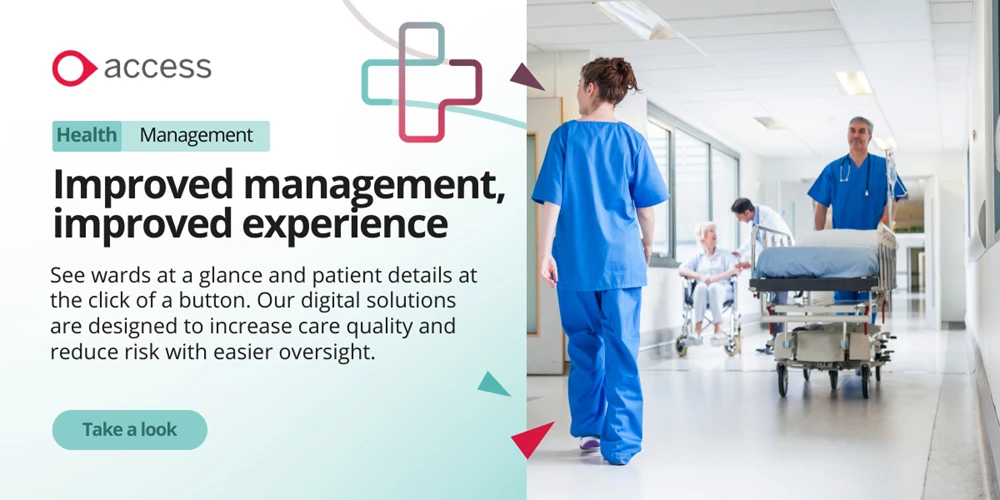
Why is patient experience important?
Patient experience is important because you need individuals to trust you in order to achieve the best care outcomes. A patient is not going to properly engage with you – or a care regimen – if they’ve had a horrible time in a GP surgery, clinic, or outpatients department.
An NHS England guide from 2013 clearly states: “patients who have a better experience of care generally have better health outcomes”. This has a financial impact in cases of poor patient experience, with poorer care outcomes or readmission or deterioration of longer-term conditions.
It’s not just patients that suffer when the patient experience is poor though. Staff bear the burden of criticism and unhappiness, which in cases has become physical and violent. The British Medical Association reported in 2021 that almost 15% of NHS staff had experienced physical violence from patients, their family members, or even the public.
Beyond this, it’s also common knowledge in business that a bad experience has much more of an impact via word of mouth – and now social media – than a positive experience does. Even if a healthcare provider isn’t thinking compassionately, the damage poor patient experience can do for reputation is extremely detrimental. For NHS it’s damaging, for a private healthcare provider it could be serious enough to collapse the business.
What makes a good patient experience?
It’s difficult to truly define what makes a good patient experience when everyone’s impression of care and treatment is subjective, but there are some provable positive points we can highlight.
Perhaps the most important factor is control: when people have more control, or more involvement, with their own care then they feel more empowered and reassured that things are being taken seriously and they are receiving good quality care. It’s difficult to sit back and just be told what’s going to happen, and modern healthcare is undoing a lot of the old habits of past clinical actions by informing patients about their treatment and the choices or options they have going forward.
This empowerment comes through education, and can be continued afterwards to encourage more self-care and the preservation of wellbeing. This is a great opportunity to get family and friends involved in care too. People often rely on their nearest and dearest to help with daily life if they are recovering or managing a condition. The more these people know, the more they can help and accommodate the individual.
Aside this, things such as respecting patient values (religion or culture) and their preferences should be considered. Staff should reflect the best values of compassion and empathy, and care should be delivered in a coordinate fashion that’s not wasting a patient’s time or messing patients around. One way to do this is via telehealth, or telemedicine.
How to improve patient experience
In terms of ways to improve patient experience, there are three obvious approaches:
- Onboard dedicated patient experience solutions
- Hire/recruit a patient experience specialist to manage goals and targets
- Implement a patient experience survey to gauge patient opinions
You don’t need super innovative ways to improve patient experience, you just need to do the basics and do them well. Patient experience matters, so we must consult with the patients. The best way to do this is through surveys and questionnaires, but the best way to support those is with patient experience solutions. The data generated by these solutions need analysing though. Software can perform some of this process, but to achieve the full output you need a dedicated staff member to interpret and translate the data into actionable intelligence.

Patient experience software
Patient experience software has a significant overlap with patient engagement software, which talks about the best solutions to engage patients with their own healthcare. This engagement is crucial, because it’s the best way – and simplest way – to gauge the patient experience.
Patient experience solutions are any software that support the assessment of a patient’s thoughts and feelings. Patient engagement solutions fall within this remit, because both can handle things like appointment scheduling, appointment or medication reminders, and review functions.
Patient portals are the typical way to present patients with these options, but GP surgeries and hospital departments do often have quick survey features utilising smiley faces on a touchscreen to gauge your satisfaction after usage, and email follow-ups from healthcare organisations are also quite common to assess patient experience. This would technically qualify emailing solutions such as Mailchimp and MailerLite as patient experience software.
Another such solution for improving patient experience, rather than just assessing it, is telemedicine or telehealth.
How does telemedicine improve patient experience?
Telemedicine, or telehealth, improves patient experience through the sheer convenience of being able to engage with healthcare professionals without having to leave a home setting.
Telecare became much more prevalent in the pandemic as a way of minimising the exposure to Covid-19 for patients and healthcare professionals alike, but the flexibility and – in many cases – cost-effective approach (travel or parking costs) has meant the popularity has continued to grow in the months and years since.
Patient Experience jobs
As mentioned above, dedicated patient experience jobs will help a healthcare provider to manage their targets regarding patient satisfaction and the feedback they provide.
Patient experience careers can include any of the following roles:
- Director of patient experience
- Patient experience coordinator
- Patient experience manager
- Head of patient experience
- Patient experience analyst
Regardless of what type of role a patient experience representative undertakes, the staffer has three definitive duties:
- Manage the goals of the parent organisation
- Promote patient engagement
- Improve the patient experience
The patient experience specialist will work to the instructions of their employer, but will strive to promote the patient-clinician relationship. As we’ve discussed in previous articles on increasing patient engagement, by better educating patients we can empower them to take more control of their own healthcare. Control is more engaging than being a passenger to your own care, and that sense of involvement or inclusion is demonstrably more satisfactory to individuals. The risk though is implementing these solutions and strategies but not having anyone onboard as an overseer, a manager, to ensure that feedback is being acted upon – or that the engagement avenues to assess experience are performing correctly. A broken email survey will annoy everybody reading it and kill participation, for example. A patient experience coordinator is quality assurance, in effect.
Patient experience survey
A patient experience survey is the final of the three areas to immediately implement. There’s not too much to articulate here; patients have opinions and feelings about the care they receive(d). It is good practice for health and care organisations to discover these opinions, so that clinicians can react accordingly to better tailor their approach to care and specifically – where applicable and appropriate – to the individual.
It should be stressed that most of these surveys or questionnaires should be anonymous, so as not to jeopardise any individual or incur any prejudice against them due to a negative review or experience, but there may be occasions where testimony could have only come from a single individual or it is important to have explicit testimony from a known subject.
Companies like Google already provide basic survey forms, and smaller organisations will use these kinds of feedback forms, but bigger healthcare providers should be utilising more bespoke forms of surveying patient experience – whether through their website directly, a patient portal, or direct email communication.
These patient experience surveys will query basic questions such as ‘How did you find your most recent visit’ and so on, but it will also query the calibre of clinical care, attention to detail from clinicians and staff, speed of response, and how well informed a person felt – just to name a few avenues of investigation.

NHS Patient Experience Framework
The NHS Patient Experience Framework is an official guideline document published by the National Health Service and established in 2011 by the NHS National Quality Board “to guide the measurement of patient experience across the NHS.” In layman terms, it’s all about enhancing patient experience.
The patient experience improvement framework was published in 2018 by NHS England (NHSE), with a much more in-depth explanation of how to improve patient experience. Within the guide, NHSE states: “Good experience of care, treatment and support is increasingly seen as an essential part of an excellent health and social care service, alongside clinical effectiveness and safety. A person’s experience starts from their very first contact with the health and care system, right through to their last, which may be years after their first treatment, and can include end-of-life care.”
The patient experience in hospitals is a big part of the mission to improve patient satisfaction, given the burden that NHS hospitals are currently working to overcome post-Covid, but good patient experience is a larger goal that should be there regardless of any other issues.
Why is the NHS patient experience framework important?
The important thing is knowing how to provide a safe and positive experience for patients. The purpose of the NHS Patient Experience Framework is to ensure that better patient experience is always being strived for and that the patient experience journey
The NHS National Quality Board (NQB) established the patient experience framework in October 2011 as a way to define what the patient experience is, what a good patient experience looks like, and the ways to overcome challenges during the patient journey.
How can the NHS patient experience framework overcome challenges?
The NHS patient experience cannot alone overcome challenges, but it does serve as a simple, one page document to inform healthcare professionals and NHS trusts as to their operating principles. This framework is a guideline for staff to work from and refer back to when they’re dealing with patients, to ensure that it’s not just the clinical activity that is being delivered at a high standard but the softer skills of compassion, trust, empathy and more that are mixed in to reassure and convince the patient that you are the right team to provide them with the right care.
Improving the patient experience – In conclusion
The patient experience in healthcare isn’t something that is being ignored, but it isn’t always acknowledged as being just as important as the care delivered. Healthcare organisations can’t expect better care outcomes and adherence to their medical expertise if there’s a negative patient experience.
Improving patient experience requires high standards, and commitment to these standards in the form of training to achieve and penalties for failure to meet them. A patient experience survey is a very simple way to get the ball rolling with assessing patient sentiment, but if organisations are serious they must pursue patient experience software to handle the data analytics and keep a keen eye on clinical performance versus patient satisfaction.

